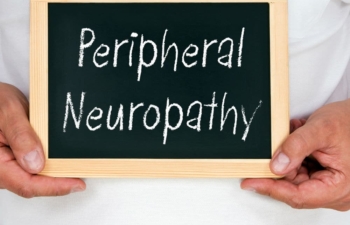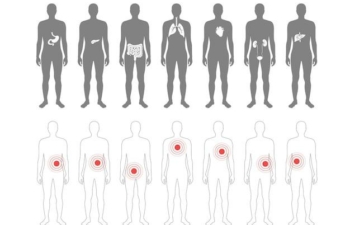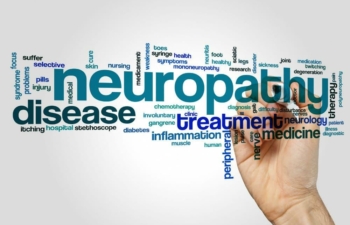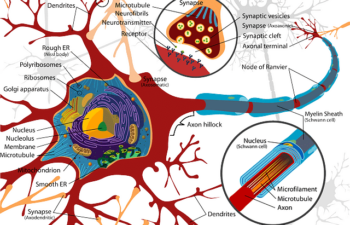Multifocal Motor Neuropathy (MMN) is a rare but debilitating condition that affects the motor neurons responsible for controlling movement in the limbs. This condition is often misdiagnosed or overlooked due to its similarity with other neurological disorders such as ALS or Guillain-Barre Syndrome. However, early diagnosis and treatment can significantly improve the quality of life for those affected by this condition. In this article, we will explore the causes, symptoms, and treatment options available for MMN. We'll discuss the special challenges faced by those living with this condition and how they can cope with the unique difficulties it presents. Whether you're someone living with MMN or a caregiver seeking to better understand this condition, this article will give you the information you need to make informed decisions about your health and wellbeing. So, let's dive in and learn more about Multifocal Motor Neuropathy, its causes, symptoms, and treatment options.
What causes Multifocal Motor Neuropathy?
The exact cause of Multifocal Motor Neuropathy is not yet known. However, research suggests that the immune system plays a role in the development of this condition. In MMN, the immune system mistakenly attacks the myelin sheath, which is the protective covering of the motor neurons. This results in damage to the motor neurons, which in turn affects the signals sent between the brain and the muscles.
Some studies also suggest that genetics may play a role in the development of MMN. However, more research is needed to fully understand the genetic factors that contribute to this condition.
Other factors that may increase the risk of developing Multifocal Motor Neuropathy include exposure to certain toxins, viral infections, and other autoimmune disorders.
Symptoms
The symptoms of MMN can vary from person to person. In general, the symptoms are progressive and start in one limb before spreading to other limbs. The symptoms can include:
- Weakness in the hands and arms, which can make it difficult to perform tasks that require fine motor skills.
- Muscle wasting, which can lead to a decrease in muscle mass and strength.
- Cramping and twitching in the affected muscles.
- Difficulty with coordination and balance.
- Numbness or tingling in the affected limbs.
It's important to note that the symptoms of MMN can be similar to those of other neurological disorders, which can make it difficult to diagnose. If you're experiencing any of these symptoms, it's important to seek medical attention as soon as possible.
Diagnosis
Diagnosing Multifocal Motor Neuropathy can be challenging because the symptoms can be similar to those of other neurological disorders. To diagnose MMN, doctors will typically perform a physical exam and order several tests, including nerve conduction studies and electromyography (EMG). These tests can help to determine the extent of nerve damage and rule out other conditions.
If MMN is suspected, doctors may also perform a blood test to check for the presence of specific antibodies that are associated with this condition.
Treatment options
While there is no known cure for MMN, there are several treatment options available that can help to manage the symptoms and improve quality of life. These treatment options include:
Medications
There are several medications that can help to manage the symptoms of Multifocal Motor Neuropathy. These medications include immunoglobulin therapy, which involves the infusion of antibodies to help reduce inflammation and prevent further damage to the motor neurons. Other medications that may be prescribed include corticosteroids, which can help to reduce inflammation, and immunosuppressants, which can help to suppress the immune system and prevent further damage to the motor neurons.
Physical therapy and occupational therapy
Physical therapy and occupational therapy can also be helpful in managing the symptoms of MMN. These therapies can help to improve muscle strength, flexibility, and coordination, which can make it easier to perform daily tasks. Additionally, these therapies can help to prevent muscle wasting and improve overall quality of life.
Alternative treatments
There are also several alternative treatments that may be helpful in managing the symptoms of MMN. These treatments include acupuncture, massage therapy, and chiropractic care. While these treatments may not be effective for everyone, they can be a useful addition to the overall treatment plan.
Living with Multifocal Motor Neuropathy – coping strategies and support
Living with MMN can be challenging, but there are several strategies that can help to cope with the unique difficulties it presents. These strategies include:
- Staying active: Regular exercise can help to improve muscle strength and flexibility, which can make it easier to perform daily tasks.
- Seeking support: Joining a support group or connecting with others who are living with MMN can be helpful in managing the emotional and psychological impact of this condition.
- Making adaptations: Making adaptations to your home and routine can make it easier to perform daily tasks. For example, installing handrails in the bathroom or using assistive devices can help to improve safety and independence.
- Practicing self-care: Taking care of yourself through activities such as meditation, yoga, or hobbies can help to reduce stress and improve overall wellbeing.
Conclusion
Multifocal Motor Neuropathy is a rare but debilitating condition that affects the motor neurons responsible for controlling movement in the limbs. While there is no known cure for MMN, there are several treatment options available that can help to manage the symptoms and improve quality of life. It's important to seek medical attention if you're experiencing any symptoms of MMN, as early diagnosis and treatment can significantly improve outcomes. Additionally, living with Multifocal Motor Neuropathy can be challenging, but with the right strategies and support, it's possible to maintain a high quality of life.







